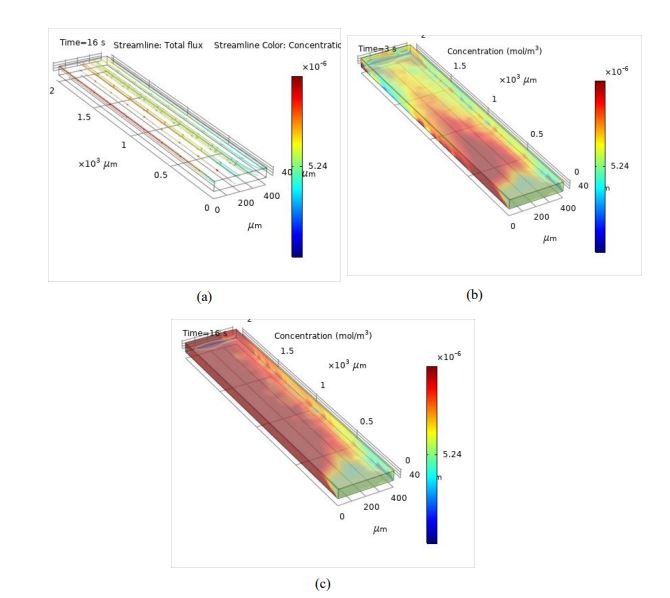
Analysis of PM 2.5 Pollutant Concentration of Different Contexts in a Microfluidic FEM Simulation Settings
This blog is a summary of our recent research publication regarding the analysis of PM 2.5 concentration health impact with the help of microfluidic simulation.
RESEARCHSIMULATIONHEALTH DESIGNINNOVATION
Mahmuda Yasmin Dola, Muhammad Golam Sami
8/2/20233 min read



Image: Simulation study of LOAC Device by Muhammad Golam Sami & Mahmuda Yasmin Dola


[This is a summary of one of our publications from the research project " Post COVID Health Space Regeneration". We will share the link to the publication when it is live. We do not share any results and simulation approach here, as the publication is still not live. This is just a write-up regarding the publication summary.]
PM2.5 concentration is one of the major determinants of pollution by fine particulate matter in the world today. Fine particle pollution is one of the major contributors to adverse health impacts, particularly respiratory health. Different sources of PM 2.5 concentration, usually of different primary and secondary sources, cause varying degrees of damage to human lungs. Many times, cities suffering from indirect pollution suffer the same damage as cities suffering from direct pollution. A comparative analysis of how much the air of a high AQI-ranked city with a low AQI-ranked city is more or less harmful to human lungs and respiratory system will help us to take important steps in air quality improvement. Also, determining how variation in pollution sources changes these results will help guide future steps in how a city's land-use plan should be restructured to achieve a healthy air environment. In this research, we aim to simulate the human lung mechanism and aspects by virtual numerical simulation of a microfluidic device known as Lung on a chip device, based on different city and context-based concentration levels of pollutants from various sources in an LOAC device through a CAD kernel model. Comparative analysis of fine particle transport, deposition, cell uptake, and inflammatory response through proven models. In this case, we used COMSOL Multiphysics's help for numerical and graphical simulation. We present a comparative discussion and numerical analysis of the transport and deposition simulations of ultrafine and coarse particles between the cities of Dhaka, Lahore, and Zurich in three different pollution contexts. In this case, I used the Eulerian approach for fine particles and Lagrange particle tracking for coarse particles.
We reach the following conclusions based on the Eulerian simulation analysis: 1. PM concentrations and pollution levels are not the only factors that influence health. Instead, the environment and climate, as well as pollution sources, are directly accountable for the respiratory system's negative consequences. 2. 2. Although cities can withstand internal pollution resources, excessive exposure to indirect pollution can have a negative impact on urban health. 3. Sustainable and livable city and house design decisions should include specific particle pollutants and their sources, rather than the overall PM2.5 concentration, according to everyone from architects to urban planners to health experts to HVAC engineers.4. In both livable cities and preventative techniques, respiratory considerations should center on how it is inhaled. 5. Industrial and automobile exposure should be reduced by using the 5-minute walk city concept and designing urban zones based on PM concentrations.
We have come to some additional conclusions, such as a slight change in PM2.5 pollutant particle concentration, even half the level, does not cause more or less damage proportionally to health conditions. Still, it depends entirely on the source and the breathing style of the people. , outdoor exposure, and how long exposure to pollution is also significant. This research has helped us identify a harmful threshold of PM2.5 concentration, as well as guide future researchers on the impact of air quality on human health in different contexts and the actions of health environment experts, urban researchers, and designers for its improvement.
Finally, optimum health requires improved environmental air quality. PM 2.5, while a significant influencer of the air quality index in general, is not a generic index for healthy environment design; nonetheless, many other factors help decide more essential issues. Source location, climatic context, and particle exposure are all equally important factors in maintaining a healthy respiratory system. We have contributed to this understanding through our study. To address key concerns of the future, a multidisciplinary strategy has been taken in which biomicrofluidic engineering and environmental science are reconciled. The susceptibility and incompressibility of covid 19, as well as the exposure of European countries, provided us with such an indication a long time ago. This research blog attempted to explain the phenomena in the context of that phenomenon.

Meet The Authors



Mahmuda Yasmin Dola
B. Arch, Khulna University of Engineering & Technology, Khulna, Bangladesh Architect | Analytical Practitioner
Head of Construction, ADORA Studios, Bangladesh
CMO & Head of Construction, SS Construction & Power Solution, Bangladesh


Muhammad Golam Sami
B. Arch, Khulna University of Engineering & Technology, Khulna, Bangladesh Architect | Futurist | Sustainable Design Expert
Operational Head, ADORA Studios, Bangladesh
Founder, samism.org
Lecturer, Department of Architecture
Northern University of Business & Technology

Related Articles



